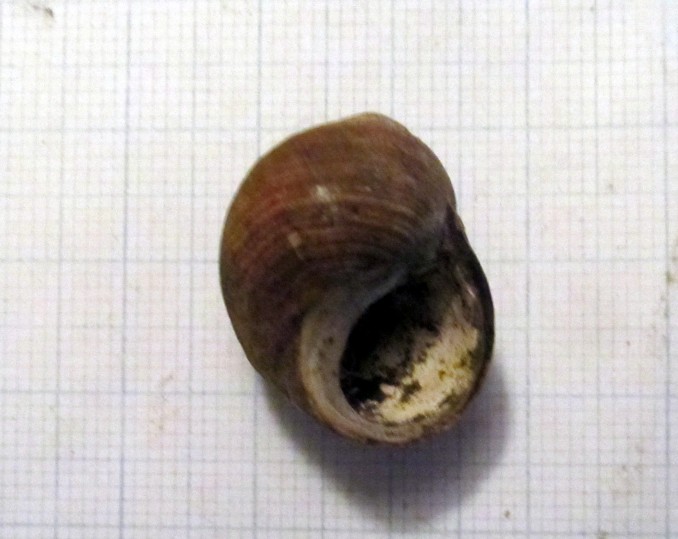Winkles, Loneliness and Treats in Nineteenth Century London

A common periwinkle (Littorina littorea) shell
I’ve been analyzing a series of samples from a large post-medieval soakaway/ cesspit feature associated with a house on the margin of the City of London. It’s chock full of china, clay tobacco pipes (one rather fancy stem ended in a bird claw cupping the bowl), animal bones, and my favourite find, a copper alloy (brass?) spinning top, now radiant green but I gave it a twirl (or several) and can tell you it is no less effective for its decay.
One sample contained a large number of fig seeds, with cherry stones and seeds of blackberries and grapes – evidently what we can euphemistically term nightsoil. I made up some slides from a small subsample of the pit fill for higher power microscopy and sure enough found eggs of parasitic whipworms and fish tapeworms, the latter a hazard of eating undercooked freshwater fish.
The most visibly numerous biological remains are periwinkle (Littorina littorea) shells, however. These became a common foodstuff in the 19th century, especially after the growth of the railways – the line to Canterbury and Whistable in Kent was even known as the Crab and Winkle Line. In the astounding London Labour and the London Poor (1851, but originally issued as a serial in the Morning Chronicle in the 1840s), Henry Mayhew details the work of winkle sellers, interviewing a number of them, who tell him that winkles are generally a “relish”, that they are particularly popular among servant girls and tradesman’s families, and that “it’s reckoned a nice present from a young man to his sweetheart, is winks”. Mayhew also notes that large quantities are sold in public houses and suburban tea gardens.
One seller made the rather touching observation was that because removing winkles from their shells is such a time-consuming affair:
“Old people, I think, that lives by themselves, and has perhaps an annuity or the like of that, and nothing to do pertickler, loves winks, for they likes a pleasant way of making time long over a meal. They’re the people as reads a newspaper, when it’s a week old, all through.”
Reading Mayhew’s detailed account invests the shells with an additional quality. Yes, they are discarded kitchen scraps, but at one point they were a treat, received with from the seller with anticipation and consumed with pleasure, more so than an everyday meal. We can extrapolate this point, and other considerations about shellfish, backwards in time: there is a history of fashion, of cultural connections, of changing technologies, of “relishes”, and of necessity; but also of local and even individual preferences, to be told from the deep history of shellfish consumption.